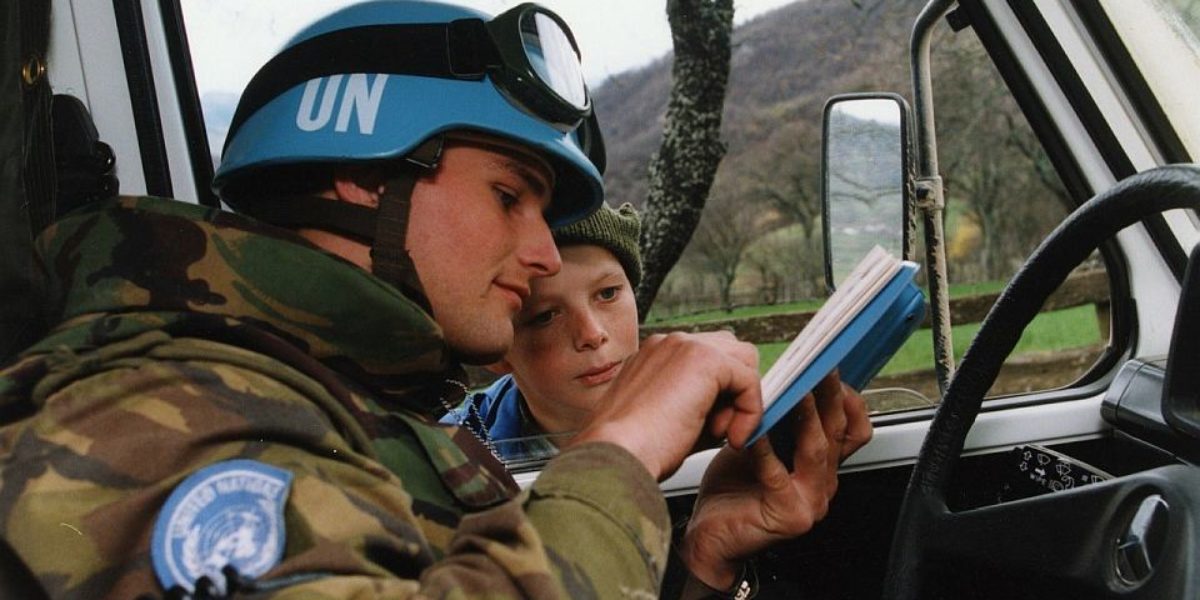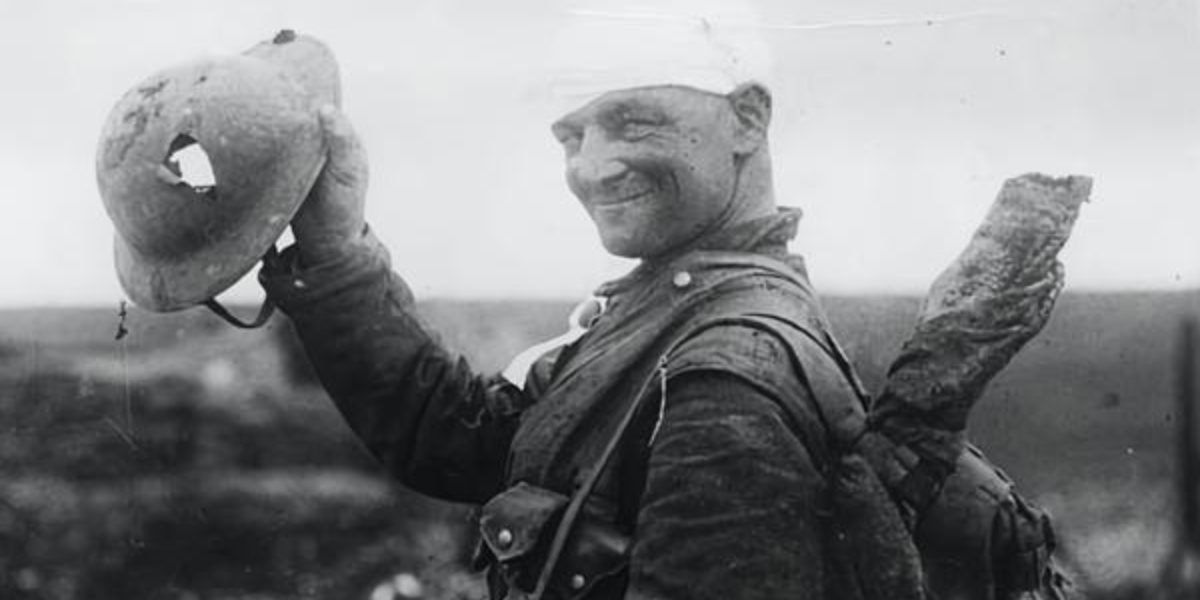Ruurd Kok is an archaeologist, journalist and author. For the Third Floor, he wrote the article below.
‘A massive helmet, measured for his temples, handsomely figured, with a crest of gold.’ This was the helmet worn by Achilles, one of the leading characters in the Iliad, the heroic account of the Trojan War as told by the ancient Greek poet Homer (c. 800– c. 750 bce). Modern military helmets bear little resemblance to the old, gleaming models with their crests swaying in the breeze. How did they develop? And what specifications does the Dutch Ministry of Defence impose for combat helmets today?
It was Homer who offered one of the earliest descriptions of a soldier’s helmet. He tells the story in the Iliad of the Trojan War, which must have occurred sometime around 1200 bce, several centuries before the poet’s own birth. This was the late Bronze Age, the period from 2300 to 800 bce when, as its name suggests, our ancestors forged the first objects made of bronze. As soon as people had mastered the technique of making swords from this metal, the first bronze helmets appeared too, which means that the helmet is just as old as the sword.
Earliest helmets
Human beings obviously attacked one another even before they had metal weapons or protection for the body: at first they used stone axes and hunting weapons with flint arrowheads. We don’t know what kind of protection, if any, people might have worn in the Stone Age. A woollen or leather head protector, for instance, could have served other purposes too and so cannot be clearly identified as a helmet. The advent of metal, however, meant that the helmet became identifiable as a design for head protection.
The oldest helmets known in the Netherlands were excavated by archaeologists and date from the Roman era. The earliest was made in the 1st century bce and is a Celtic helmet found by an amateur archaeologist at a sand dig near the river Maas at Kessel. It has been linked to a battle fought there by the Roman general Julius Caesar, but it is more likely that the object was deliberately placed in the river as a sacrifice. This was a common ritual in late-prehistoric times, and the oldest helmet found in the Low Countries also comes from a river: a bronze helmet dredged up from the river Scheldt near the village of Schoonaarde, east of Ghent in Flanders. The unique piece dates from the late Bronze Age (1100–800 bce).
Stahlhelm
Helmets have come in all shapes and sizes over the centuries, their design mainly reflecting the type of weapon they were supposed to protect against. A collection of gleaming helmets in the National Military Museum in Soest shows that protective headgear like this became smaller over time. Around 1700, the helmet was replaced by a wide variety of other head protectors, including hats, although helmets continued to be worn by cavalrymen, who fought with lances and swords.
The soldier’s helmet staged a comeback when the First World War broke out in 1914. In the early years of that conflict, German soldiers continued to wear the 19th-century Pickelhaube made of pressed leather and copper. The distinctive helmet was named after the metal spike on top, which was designed to deflect a blow from a sabre. But it failed to offer sufficient protection in this first modern war, in which armies bombarded each other with exploding grenades. So it was that the Stahlhelm or ‘steel helmet’ made its appearance on the German frontline in 1916. Its design was based on research into the wounds sustained by soldiers in the trenches. The distinctive edge of the new helmet protected the soldier’s head and neck more effectively against flying rubble and shrapnel.
Symbol
German troops continued to wear the successful Stahlhelm during the Second World War. Dirk Staat, curator of the Dutch National Military Museum, sketches the model’s development with reference to a German Luftwaffe helmet loaned for the exhibition at the Design Museum. He notes that the 1916 original went through several rounds of simplification. The last improvement occurred in 1942 with the M42: ‘All that mattered in the case of this model’, he says, ‘was that it should be faster and easier to produce’. The Stahlhelm became a symbol of Nazi Germany and so after the Second World War, the German army switched to US helmets, with the old model only remaining in use with the fire brigade. Several South American armies also wore the old German army helmet for many years.
‘Fritz’
There were echoes of the iconic German helmet when the US Army adopted a new model in the early 1980s. Soldiers referred to the new type of helmet as the ‘Kevlar’ after the super-strong synthetic fibres from which it is made. But the shape of the helmet also evoked associations with the Stahlhelm, prompting the American media to nickname it the ‘Fritz’, a derogatory name for a German. The same association arose when the Dutch army was looking to introduce a new lightweight combat helmet in the early 1990s. The military was happy with the new helmet, but Jewish organizations protested in 1993 against the supposedly ‘German model’. The historian Lou de Jong (1914–2005) declared that ‘no account has been taken of the feelings evoked among many Dutch people’. The design also touched a painful nerve for former resistance fighters when the helmet came into service in the autumn of 1995.
The Dutch Ministry of Defence has been working in the meantime to introduce the very latest model of combat helmet, the Galvion Viper P6N. ‘Its shape is very similar to that of the Stahlhelm’, the industrial designer Pim Rensink says. He works at a special department of the TNO, the Netherlands Organization for Applied Scientific Research, which studies new protective equipment. Although this model too resembles the German wartime helmet, a survey of Dutch civilians and soldiers no longer found any negative associations.
Contemporary combat helmets
Rensink knows what requirements have to be met by modern combat helmets. Shooting tests, for instance, provide information on how a helmet will collapse when impacted by a projectile. ‘It means the helmet has to be far enough away from the skull to allow space for the resulting indentation. And you also need to find a balance between comfort and weight. The bigger the helmet, the heavier it will be’, Rensink explains. Helmets need to hinder a soldier as little as possible. ‘The helmet is a burden’, Rensink continues. Clear vision and freedom of movement are important requirements: ‘A wide brim offers greater protection, but it also gets in the way more. The soldier’s ears need to be free in order to hear the direction of sound, especially at night.’
The days when a particular army could be instantly recognized by the type of helmet it wore are gone: ‘The helmet has been developed to its optimum shape. Different commercial producers now supply similar models to several countries’, Rensink says. It makes practical sense, moreover, for the different armies making up the NATO alliance to use the same equipment. The only remaining difference between countries is the camouflage pattern of uniforms.
Creating an impression
Historically, intimidating the enemy was an important consideration when designing helmets. Lion’s heads could be added as decoration, for instance, to frighten the adversary. Such things no longer play a part in the design of the modern combat helmet. Soldiers wearing them make enough of an impression in themselves, curator Dirk Staat says: ‘If you go back in history, you find that when soldiers surrendered, they used to take off their helmets to make them look less intimidating. The same logic applied in recent years when Dutch troops in Iraq and Afghanistan removed their helmets while out on patrol. It was easier for them to interact with the local population when they weren’t wearing mirrored sunglasses and combat helmets.’ The method became known as the ‘Dutch Approach’.
Staat describes the helmet as ‘defining headgear’. ‘It identifies the person as a warrior. Without your helmet you’re more of a civilian.’ The helmet as symbol of the warrior: it is precisely what will have led people in prehistoric times to drop helmets into rivers as offerings.

Combat helmet from the 1990s, as worn by the UN peacekeeping force (‘Blue Helmets’) in the former Yugoslavia. Photo image database Netherlands Institute for Military History.

